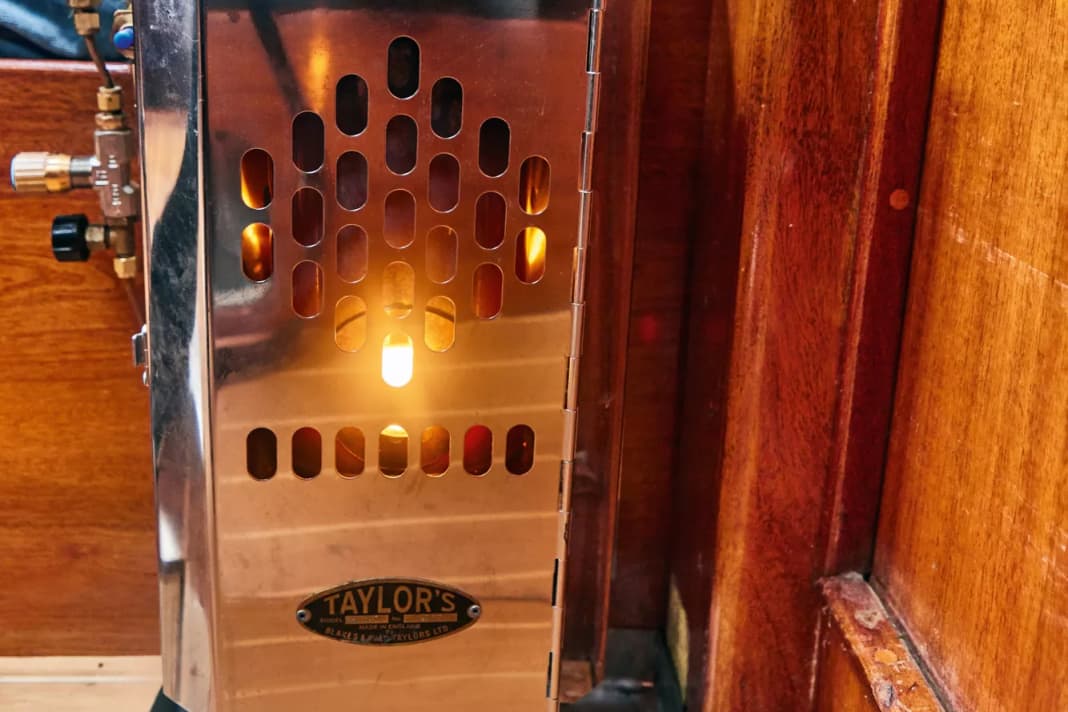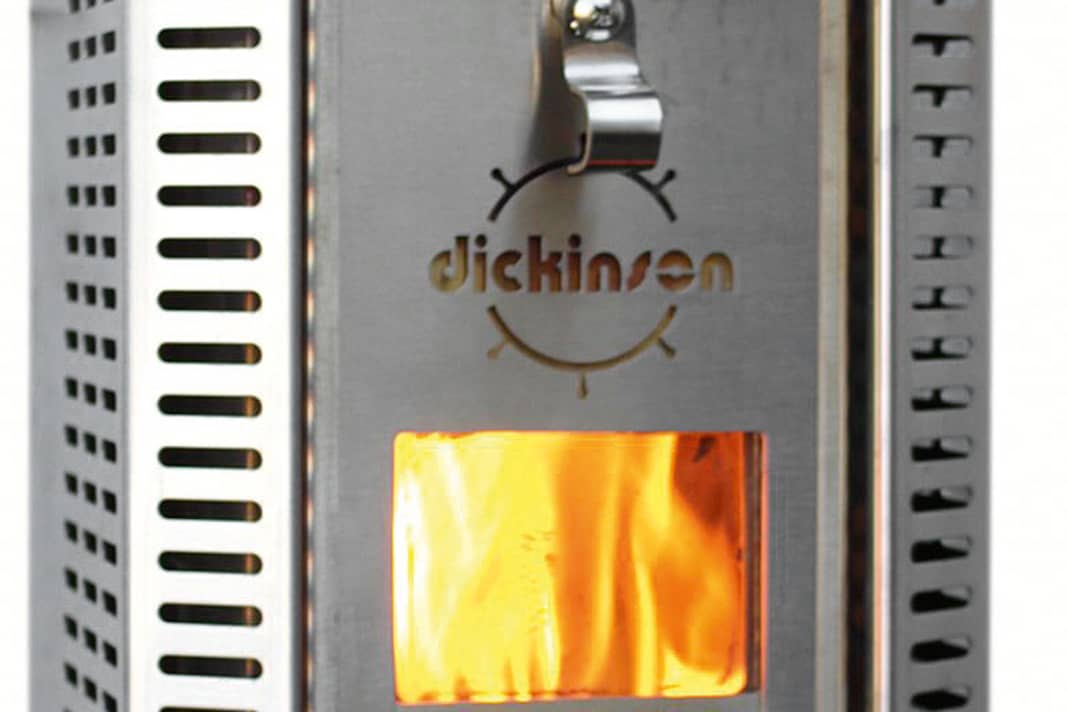





Sailing in northern European waters supposedly has one disadvantage: the season is too short. This prejudice can be quickly disproved by using the right clothing and equipment on board. Even a diesel stove in the saloon can extend the season - and with the right choice of heat source, it is even possible to sail all year round. With a little preparation and manual skill, every owner can install the season-extending heat source in the saloon themselves.
But what options are there for heating the boat? In addition to hot air systems, the options range from simple wood-burning stoves to complex, fully automated systems that not only heat all cabins, but also supply hot water for showers.
Which system?
The various solutions differ in terms of the space required for installation, the fuel used, the complexity of the installation and the mode of operation. The potential danger that a heating system can pose should also be taken into account.
Mobile, handy heat sources are popular on small cruisers, such asFan heater, paraffin burner and oil radiator. The fan heater and the oil radiator naturally have the disadvantage that they only work with shore power. And even with 230 volt mains voltage, it cannot be assumed in every harbour that the electrical installation on the jetty can supply the required power of around 1,500 watts. At the latest when other crews also switch on the electrically powered fan, the fuse often blows and the juice is gone. As this type of heating consumes a lot of electricity, some harbours do not welcome - or even prohibit - the use of fans.
Important: Fan heaters should not be left unattended. This also applies to models that switch off automatically if they tip over.
The classicDiesel heating offers the advantage that it does not require electricity, so it can also run while travelling or at anchor without draining the battery. However, it is all the more important to ensure that the cabin is well ventilated, as oxygen is consumed during combustion and carbon dioxide (CO2) is produced. If the CO2 content of the air rises, this is dangerous for the crew. It also has a detrimental effect on combustion and can produce highly dangerous carbon monoxide (CO). This has a higher affinity than oxygen to bind to red blood cells, with the result that even the smallest amounts can be fatal.
WithDiesel hot air heaters However, this risk does not exist for electric heaters, which draw their combustion air from outside. However, the appliances need electricity during operation. The consumption for pre-heating is particularly high when switching on.
On larger yachts are alsoHot water heaters This is because the water transports the heat more efficiently over longer distances than a stream of air. Both systems have the advantage that the heater itself is quite small and can be placed in the forecastle. However, laying the hot air or hot water pipes through the entire boat is time-consuming, especially if this is to be done retrospectively.
Eye-catcher with a feel-good factor
Cast-iron wood or coal stoves and brightly polished diesel stoves made of stainless steel sheet are not only popular on classic yachts. They are visually appealing and have been tried and tested for decades, the wood-burning stove even for centuries. However, the fixed installation, often on the bulkhead, requires space. However, there are also very small versions.
Opinions differ when it comes to fuel: wood-burning stoves create a cosy atmosphere and a walk along the beach may be enough to find fuel; carrying briquettes or firewood on board, on the other hand, requires space. And a cosy evening with a well-heated stove is followed by sweeping out and disposing of the ashes.
If a diesel engine is on board, diesel stoves are of course the most practical choice for nostalgic heating systems. This energy source is available everywhere and is also comparatively cheap.
Regardless of whether wood or diesel, these stoves have a few things in common: The air for combustion comes from the cabin, which is why ventilation is important. The advantage, however, is that the moist air from the cabin is drawn out through the chimney. This means that the boat not only warms up quickly, but also dries out. In addition, the stoves must be installed as centrally as possible in the saloon, as they emit heat directly. Space must therefore be available for the installation or be created through conversion work.
What to do with the exhaust fumes?
There must also be space for the exhaust air pipe, especially for the hole in the cabin roof. There are a number of aspects to consider when routing the chimney. For example, a short route to the outside is not necessarily desirable, as the pipe itself emits a lot of heat and accounts for a large proportion of the total heat output; this would be lost if the route to the outside were short. It would be conceivable, for example, to run the pipe through the wet room in order to heat it as well.
However, rules must be observed when laying the pipe. For example, the pipe should not run horizontally; it must always have a slight incline so that the smoke can escape easily. It must also be cleaned occasionally; this would be very complicated with an angled installation. The location of the opening in the superstructure roof must be chosen carefully. Of course, no fittings on deck should be obstructed by the pipe. Deck beams or other structurally relevant points are also out of the question.
If the stove is positioned near the main bulkhead, the chimney is usually located near the mast. It is essential that there is sufficient distance from the main boom and sail, as the exhaust gas flow can still be very hot. This can have a detrimental effect on the tarpaulin and sailcloth.
Diesel is on board anyway
The second important point is the supply of fuel. In the case of a solid fuel stove, this would be a baking box full of firewood or briquettes. In our case, it's diesel. The energy source for the engine is on board anyway, which is practical. Installing a second tank can make sense. This is because the diesel stove can only utilise the advantage of electricity-free operation if the fuel reaches the burner by gravity alone; this is usually not the case with the main diesel tank. A second, higher tank can change this. Alternatively, a pipe can simply be laid to the large reservoir, in which case a pump is required for delivery.
As soon as everything is running: When the cold wind howls in the shrouds, there's nothing better than the gentle hum of the diesel stove and the flickering light in the saloon.
Market overview of marine ovens
Classic marine stoves for wood, coal or diesel oil from the Toplicht range. Here we show four solid fuel stoves and five diesel stoves.






- All information under toplicht.de

